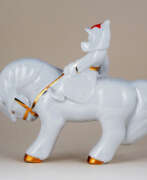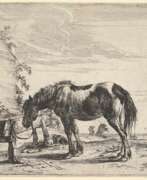Historians Animalistic
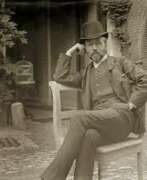

Jacques de Lalaing was an Anglo-Belgian painter and sculptor, specializing in animals. Lalaing was raised in England until 1875, when he moved to Brussels. He trained as an artist under Jean-François Portaels and Louis Gallait at the Académie Royale des Beaux-Arts in Brussels. With the encouragement of Thomas Vinçotte and Jef Lambeaux, Lalaing began to sculpt in 1884. As a painter he continued to work in a realistic, naturalistic style, as a portrait painter and producing historical scenes. As a sculptor he produced allegorical bronzes and memorial art. Along with his fellow animalier sculptors Léon Mignon and Antoine-Félix Bouré Lalaing established a distinctively Belgian tradition of animal art, to which the flourishing Antwerp Zoo contributed inspiration. In 1896 Lalaing became a member of the Royal Academy where he had studied, and from 1904 through 1913 he served as its director. His works are represented in the collections of museums in Antwerp, Bruges, Brussels, Ghent and Tournai.
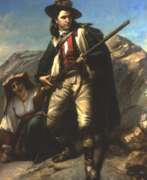

Johannes Hinderikus Egenberger was a Dutch painter, photographer and art educator. From 1840 to 1848, he studied at the Royal Academy of Fine Arts in Amsterdam with Jan Willem Pieneman. During these years, he focused on painting scenes from Dutch history. In 1854, he collaborated with Barend Wijnveld to produce a massive canvas depicting the heroic defense of Haarlem led by Kenau Hasselaer in 1573. Later, he would turn to landscapes, domestic scenes and portraits, including a series for the Rijksuniversiteit. In 1857, he was appointed Headmaster of the Academie Minerva in Groningen. In addition to his work there, he became a photographer and, in 1864, opened the first photography studio in Groningen. The following year, he resigned his position as Headmaster to devote himself entirely to photography.
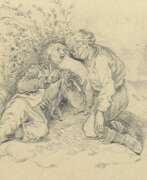

Otto Clemens Fikentscher the Elder was a German painter, draughtsman and illustrator of the Düsseldorf School. Although it is unclear whether he is related to the artist Otto Fikentscher, who was married to Jenny Fikentscher, Otto Fikentscher (the Elder) studied at the Düsseldorf Art Academy and specialised in historical painting and the depiction of horses in battle scenes. He was a member of the artists' association Malkasten and served as a war correspondent during conflicts such as the German-Danish War and the Franco-Prussian War. Fikentscher's works were reproduced in popular magazines and showed his lively and dynamic style.
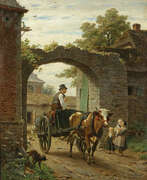

André Ploumo was a Belgian realist painter who specialized in genre scenes, antique interiors, landscapes and images of poultry. He studied at the Royal Academy of Fine Arts in Antwerp and worked for some time in the workshop of Nicaise de Keyser on the Ossenmarkt. At the age of 20, he completed his studies, left the Academy and mainly painted paintings with interiors and figures, inspired by the painting of the 16th-17th centuries. A lucrative genre practiced by many Antwerp artists at the time. In the 1860s, Plumo painted mainly historical genre scenes. In the 1860s he met Jacques Rossels, Isidore Meyers and other landscape painters in Kalmthout. He traveled through the Ardennes, where he painted the Meuse valley and forest scenes several times. Due to his frequent stay in Kalmtaut and its environs, he began to show an increasing interest in nature and animals, he painted pictures depicting livestock and birds. In 1872 he was awarded a diploma and a medal at an exhibition in London.


Aert Schouman or Aart Schouman was an 18th-century painter, now better known as a glass engraver, from the Dutch Republic. He was a prolific and versatile Dutch painter, glass engraver, printmaker, collector and dealer, who produced still lifes, biblical and mythological themes, natural history studies, genre, historical and topographical works, portraits, sketches, etchings and mezzotints. He designed tapestries, painted wall-hangings and decorated objects such as fans, snuffboxes and even the glass windows of a magic lantern. From 1742 until 1792 he was head of the Dordrecht Guild of St. Luke, and in 1751 he became regent of the Hague drawing school associated with the Confrerie Pictura of The Hague. In 1736 he founded the "Brotherhood" of the Confrerie in The Hague, a fraternity of amateur art lovers from Dordrecht and environs, of which he was headman during the years 1752–1762.
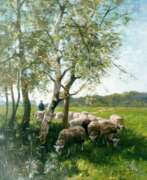

Willem Steelink Jr. was a Dutch painter and graphic artist, associated with the Laren School. He initially focused on portraits, genre scenes and historical paintings, done in a style influenced by the Romantic style of his father. In 1880, he visited the moors around Gooi and began to paint in the style of the Hague School. Together with his friend, Hein Kever, he spent several summers in Laren where he came under the influence of the Laren School, inspired by Anton Mauve. The picturesque village of Heeze became one of his favorite places to work. Sheep, and their shepherds, was his favorite subject. He was also known for his graphic work and etchings, and made copies of famous works by Jozef Israëls and Johannes Bosboom. Later, he did illustrations, mostly for historical works and children's books, but also for an edition of the New Testament in Sundanese. His works were popular and sold well in Germany, England and Canada. He was a member of many artistic organizations, including Arti et Amicitiae and the Pulchri Studio, and received the Belgian Order of the Crown and the French Order of Saint Lazarus.
